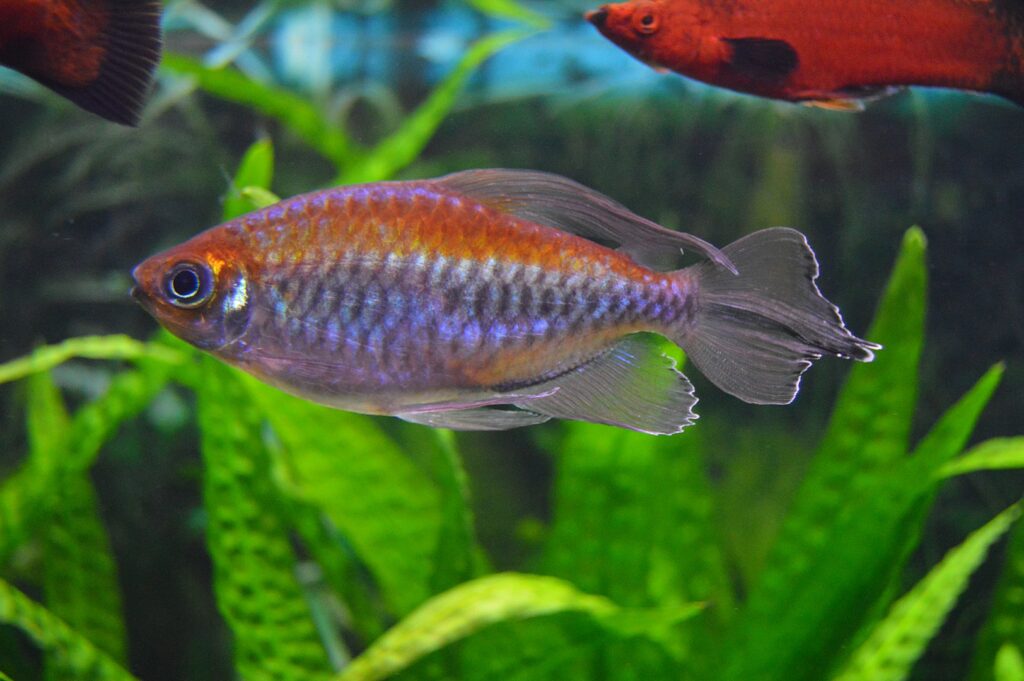Congo tetra
Phenacogrammus interruptus

Endemic species
The Congo tetra inhabits freshwater rivers and streams. The fish’s body is covered with large, shimmering scales. The Congo tetra thrives in large shoals, with members of the same species around it for protection against predators. It is a fast and active swimmer and is found around vegetation on the bottom when looking for food. The species is endemic, meaning that it is found only in a specific area. In the case of the Congo tetra, it is the area around the Congo River in Congo-Kinshasa.

Photo: Krzysztof-Bartosik-CC-BY-SA
Wavy, veil-like fins
Male Congo tetras have vivid colours with reflective scales, and they possess longer rays in the tail and dorsal fins that make the fins look like billowing and wavy veils. They are also much larger than females. Mating itself can last for several days, during which time a female can lay up to 300 eggs. The fry hatch after about 6 days and are self-sufficient from the get-go. The species is not much studied in the wild, but is a very common and popular aquarium fish.
Distribution worldwide
The Congo river.

Threat based on the Red List

Trade regulations
CITES: Not listed.